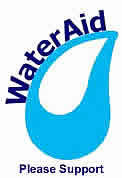
High Pressure
Water Jetting
Drain Jetting
Methodology
Last updated 6 January, 2014
draindomain.com > site map > drain jetting > drain jetting methodology
The Benefits of High Pressure Water JettingTrying to clear blocked drains with drain rods has certain limitations with regard to the type of blockages that can be successfully cleared, the distance that you can sensibly and effectively push a set of rods and the problems rods have with negotiating sharp bends. Drain rods also tend to punch a hole through blockages made up of grease and fat or tree root ingress so that the system can start to block again as soon as the drain rods are put back in the van, rods also have little affect on silt and debris or obstructions due to a build up of encrustation on joints unless you are using specialist attachment tools High pressure water jetting allows us to clear blockages from great distances and from limited access points like soil vent pipes and through certain gully pots if manhole access is not available, the powerful jets also descale the pipe work cutting back tree roots and grease and fat and when working with the flow of the system jetting is an excellent method of removing silt and debris. |
|
The Basic Methodology of Drain Water JettingWater is stored in holding tanks before being pumped through a high pressure hose with a jetting nozzle attached at the end, the nozzle has pin holes drilled at angles to the rear, and when water is pumped through the nozzle the water jets propel the hose forwards. The jetting machines come in various shapes and sizes but typically on domestic blockages they are pumping 8 to 12 gallons a minute into the system at anything from 1000psi to 4000psi The recording below shows how the jetting head propels the jetting hose forward and on this occasion there is also a forward facing jet which is designed to break down blockages such as grease, fat and tree root ingress |
|
The Downside of Drain Water JettingThe process involves pumping large volumes of water into the drainage system so if the only access you have is upstream of the blockage things can get messy until the blockage clears, so in most cases you try to jet from a downstream position back towards the blockage but this is not always possible. As with any other form of drain clearing if you come to a collapsed pipe or severely displaced joint the jetter can leave the drainage system and enter the sub-soil area and become stuck fast, it happens to the best of us but thankfully not too often. |
|


